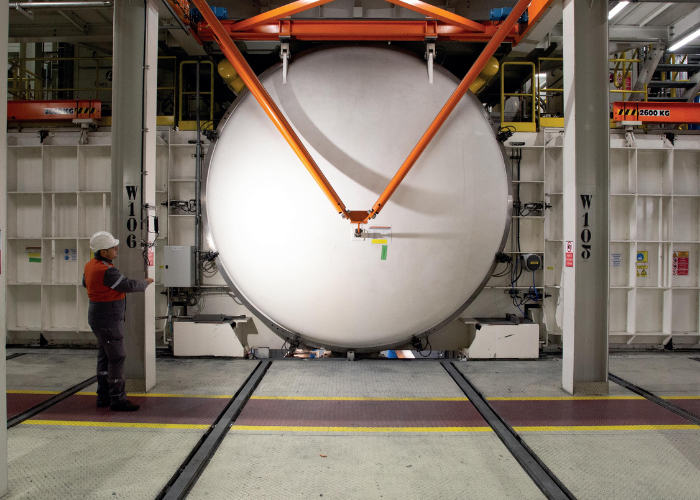Achieving optimal performance and quality welds when working with carbon steel is crucial in welding projects. The choice of shielding gasoline plays a significant role in welding outcomes. This article explores the benefits of premium mig shielding gas for carbon steel welding, enabling welders to enhance their processes and achieve improved results.
Significance of Gasoline Mixtures for Welding BenefitsUnderstanding The Composition Selection ConsiderationsApplications Choosing the Right Mixture Best PracticesConclusion: Welders can achieve superior results by harnessing the benefits of high-quality gasoline blends for carbon steel welding. These mixtures offer improved arc stability, minimized spatter, enhanced weld appearance, and increased penetration and control. Material type, welding process, and joint design should be considered when selecting the appropriate gas mixture. Following best practices and consulting with experts ensure optimal performance throughout welding projects.
Significance of Gasoline Mixtures for Welding
- Higher weld quality: High-quality gasoline blends for carbon steel welding contribute to improved weld quality by reducing defects and ensuring cleaner welds.
- Enhanced welding efficiency: Helps promote better arc stability and control, increasing welding efficiency and productivity.
- Reduced post-weld cleanup: By minimizing spatter and contaminants, high-quality gasoline blends reduce the need for extensive post-weld cleanup, saving time and effort.
Benefits
- Improved arc stability: They provide a stable arc, ensuring consistent and controlled welding, leading to higher-quality welds.
- Minimized spatter and porosity: Using high-quality gasoline blends reduces spatter and minimises porosity formation, resulting in cleaner and defect-free welds.
- Enhanced weld appearance: High-quality gas blends improve weld aesthetics by reducing discoloration, oxidation, and surface defects.
- Increased penetration and control: These mixtures enable deeper weld penetration while maintaining precise control over the weld pool, ensuring strong and controlled weld joints.
Understanding The Composition
- High argon levels: High-quality blends often contain a significant amount of argon, the primary shielding gas, preventing oxidation and contamination.
- Other gases, such as carbon dioxide or oxygen, may be added to the mixture to modify properties and achieve desired welding characteristics.
- Customizable mixtures: High-quality blends can be tailored to specific welding requirements, allowing for customization based on material type, thickness, and welding process.
Selection Considerations
- Material thickness and type: The choice of gasoline blends should consider the thickness and type of carbon steel being welded for optimal performance.
- Welding process: Different welding processes, such as MIG, TIG, or Flux-Cored Arc Welding, may require specific mixtures to suit the process requirements.
- Joint design and position: The design and position of the weld joint influence gasoline distribution and coverage, necessitating the selection of appropriate mixtures.
- Cost and budgetary constraints: It’s essential to balance the cost with the available budget for the welding project while considering the benefits.
Applications
- MIG Welding: High-quality mig shielding gas is commonly used in MIG welding to shield the weld pool, ensuring high-quality and efficient welding on carbon steel.
- TIG Welding: Gasoline blends are utilized in TIG welding to protect the tungsten electrode and the weld pool, resulting in precise and aesthetically pleasing welds on carbon steel.
- Flux-Cored Arc Welding: gasoline blends and flux-cored electrodes provide excellent shielding for the weld pool in both self-shielded and gas-shielded flux-cored arc welding processes on carbon steel.
Choosing the Right Mixture
- Consultation with experts: Seek advice from welding professionals to obtain expert guidance and recommendations for selecting the appropriate premium mixture for carbon steel welding.
- Utilizing selector tools: Take advantage of selector tools provided by welding suppliers to help determine the most suitable premium mixture based on specific welding parameters.
- Assessing welding requirements: Evaluate welding requirements, including material type, thickness, welding process, and project specifications, to make a consistent decision when choosing the right premium gasoline mixture.
Best Practices
- Proper gas flow rate: Maintain the recommended flow rate to ensure effective shielding and optimal performance during carbon steel welding.
- Shielding gasoline delivery systems: Utilise reliable and well-maintained delivery systems to ensure consistent and accurate delivery of high-quality blends.
- Storage and handling: Adhere to proper storage and handling practices for premium cylinders to preserve gasoline integrity and ensure safety in carbon steel welding operations.
Conclusion: Welders can achieve superior results by harnessing the benefits of high-quality gasoline blends for carbon steel welding. These mixtures offer improved arc stability, minimized spatter, enhanced weld appearance, and increased penetration and control. Material type, welding process, and joint design should be considered when selecting the appropriate gas mixture. Following best practices and consulting with experts ensure optimal performance throughout welding projects.









